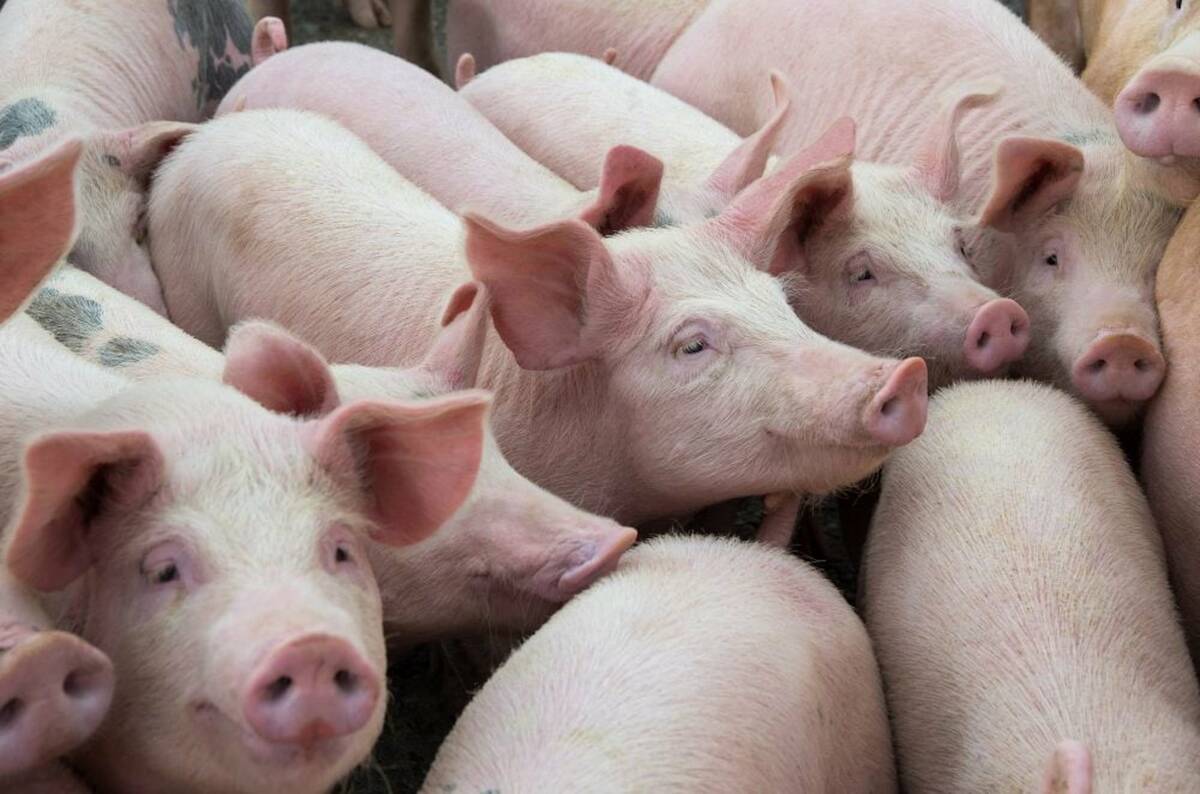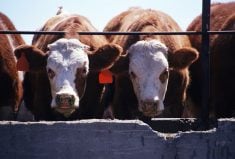Western Canadian feeder cattle prices were relatively unchanged from week-ago levels; however, low volumes and various-quality cattle characterized the market.
It’s that time of year, when stragglers and recovering sick animals come available and discounts were quite sizeable on substandard cattle. Quality late bloomers were well bid and there was no shortage of buyers. Feedlot margins have eroded from the record highs earlier in May but remain in positive territory. In southern Alberta, a small group of larger-frame medium-flesh steers averaging around 600 lbs. traded at $240, while 750-lb. steers of similar quality sold for $210. Fortuitous price action was noted across the Prairies, which can occur in a low volume environment. A small group of RMX steers weighing just under 800 lbs. reached up to $219 in central Alberta while mixed steers with no special features, averaging 850 lbs., were quoted at $196 in eastern Saskatchewan.
Read Also

U.S. livestock: Hogs rise ahead of ‘Hogs and Pigs’ report
Chicago cattle futures continued to inch upward on Monday. Hogs also rose in anticipation of Tuesday’s Hogs and Pigs report….
Calves and mid-weight feeder cattle held value with steady demand noted from feedlot operators and farmers, who were shopping for grassers. Pasture conditions are optimal and there is no shortage of feed. Feeder cattle futures were under pressure but this didn’t temper buying enthusiasm. Cattle producers have basked in the sunshine these past few months and it takes time to change a season. A small group of mixed heifers averaging 660 lbs. was quoted at $210 in Manitoba; steers averaging just over 600 lbs. sold for $240 in the same region.
Alberta packers were buying fed cattle in the range of $159-$163 this past week, which is approximately $20 above breakeven pen closeout values. However, looking forward four to six months, the current price of feeder cattle will cause margins to hover around breakeven. This will likely halt upside potential but the market appears well supported in the short term.
— Jerry Klassen manages the Canadian office of Swiss-based grain trader GAP SA Grains and Produits Ltd. and is president and founder of Resilient Capital, specializing in proprietary commodity futures trading and market analysis. Jerry consults with feedlots on risk management and writes a weekly cattle market commentary. He can be reached at 204-504-8339.
















